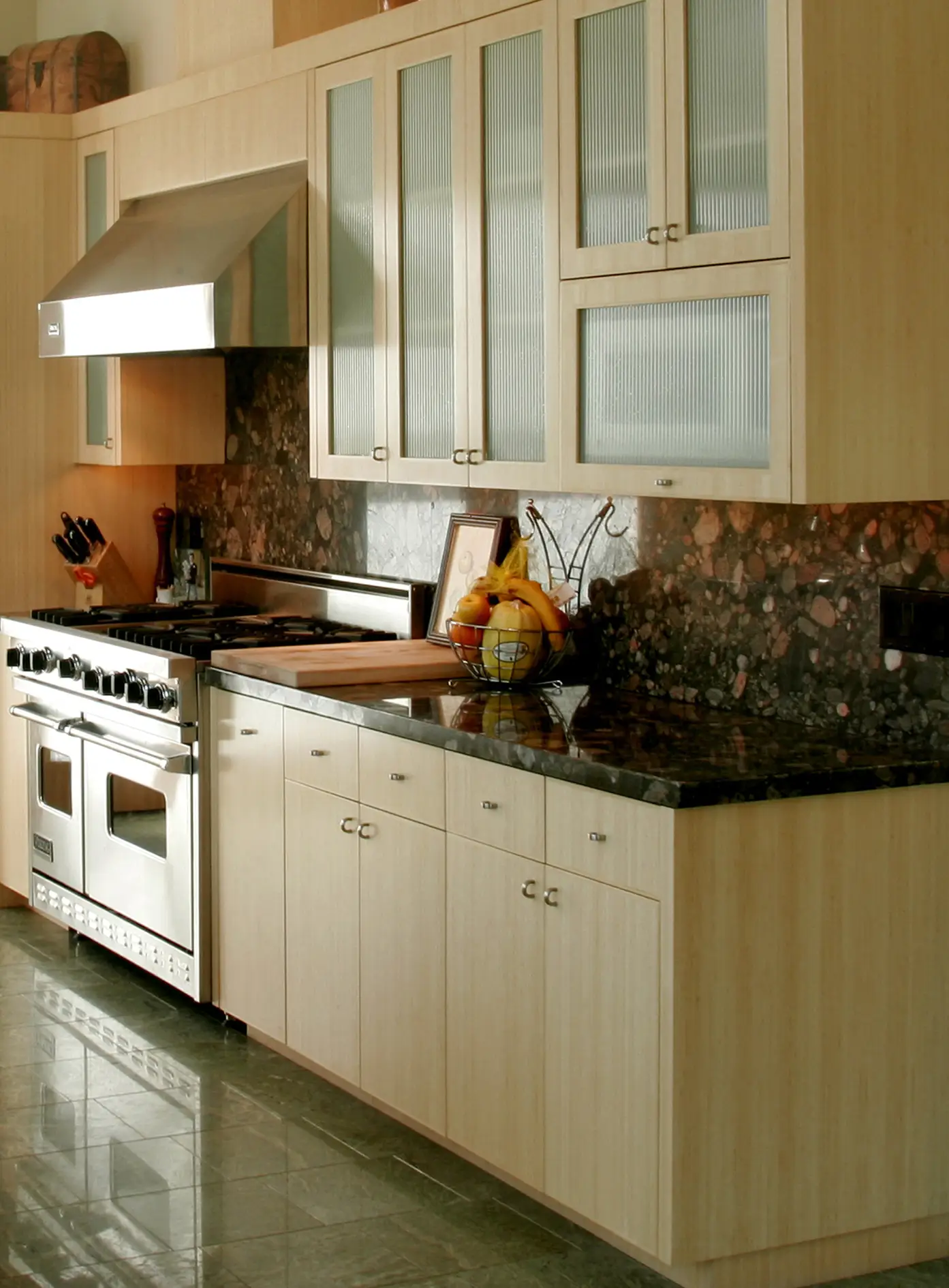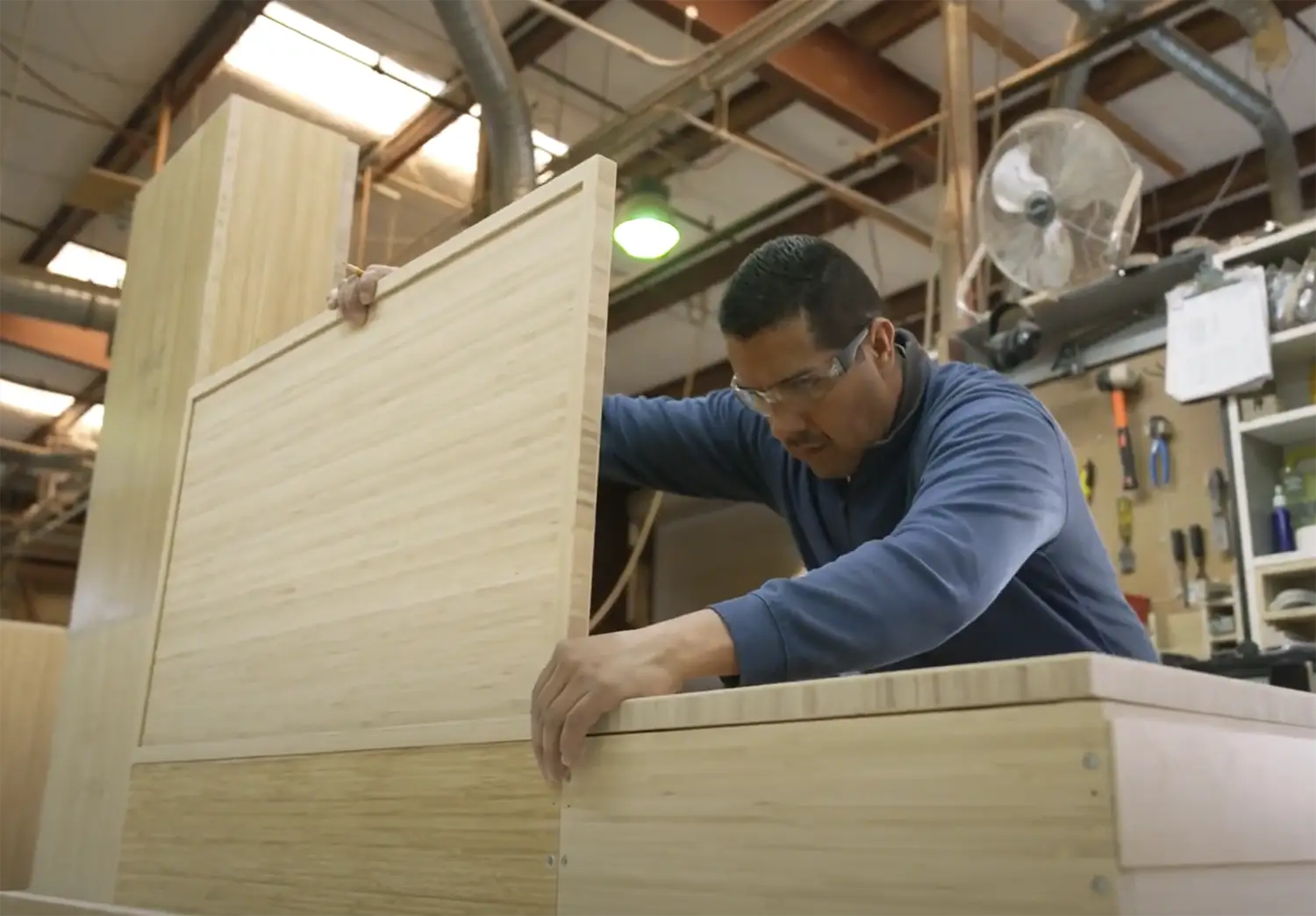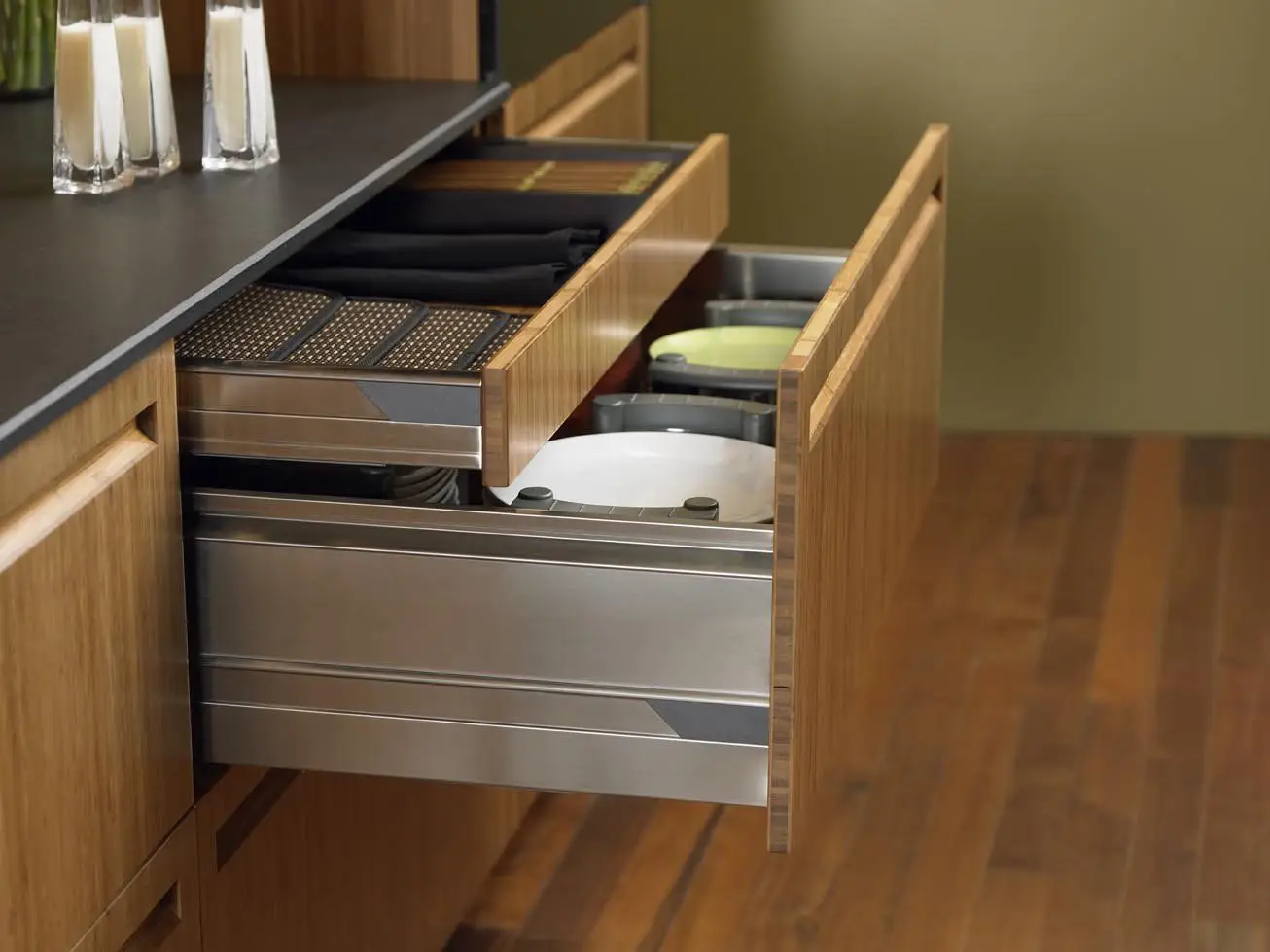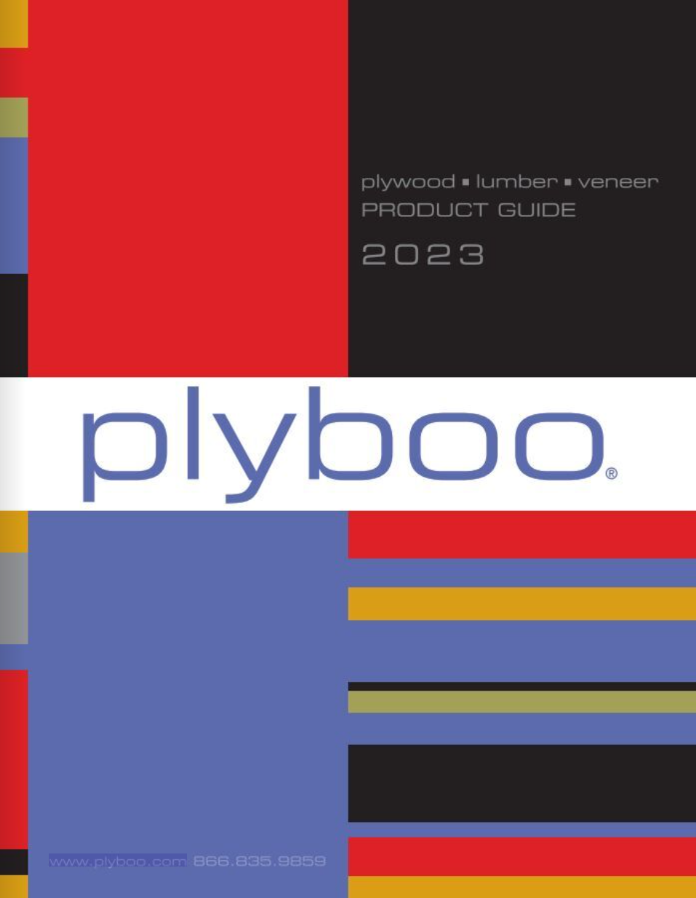
Sustainability without Compromising on Style
Smith&Fong, the industry leader in innovative bamboo plywood solutions, proudly announces the launch of its latest Plyboo Pro™ product line: bamboo plywood for kitchen cabinets. Designed for homeowners, designers and cabinet makers seeking sustainability without compromising on style, this new collection offers an eco-conscious alternative to traditional wood used in cabinetry, with enhanced product selection and services serving professional fabricators and installers, as well as the homeowner.
With a growing demand for environmentally responsible home design, Smith&Fong developed Plyboo Pro bamboo plywood, a product that blends aesthetic appeal with durability.


Strength, Versatility, and minimal environmental impact
Bamboo plywood is a renewable resource known for its strength, versatility, and minimal environmental impact. Unlike traditional hardwoods, bamboo grows rapidly and regenerates naturally, making it a top choice for sustainable kitchen materials. In addition, the Plyboo Pro bamboo plywood meets stringent indoor air standards by being California 93120 compliant.

Key features of Plyboo Pro products for kitchen cabinets include:
- Sustainable Material: Sourced from fast-growing, responsibly harvested bamboo.
- Durable Construction: Stronger than many traditional hardwoods, ensuring longevity.
- Modern Aesthetic: Available in a range of natural finishes to complement various kitchen styles.
- Customizable Designs: Various configurations to suit different kitchen layouts and storage needs.
We believe homeowners should have access to high-quality, stylish cabinetry that aligns with their values of sustainability and longevity, we will be working with cabinet shops to ensure this new material is available for use in kitchens.
-Stephen Sandor, head of the Plyboo Pro™ division

Vertical Grain Amber
(Cross Core) *mm tolerance ± .5mm thickness
25mm x 1219mm x 2438mm*
19mm x 1219mm x 2438mm*
13mm x 1219mm x 2438mm*
6mm x 1219mm x 2438mm*
Vertical Grain Natural
25mm x 1219mm x 2438mm*
19mm x 1219mm x 2438mm*
13mm x 1219mm x 2438mm*
6mm x 1219mm x 2438mm*
All products available FSC® 100%
All products CARB II compatible
All products class C, class B fire rated available for 3-ply
Flat Grain Amber
(Cross Core) *mm tolerance ± .5mm thickness
25mm x 1219mm x 2438mm*
19mm x 1219mm x 2438mm*
13mm x 1219mm x 2438mm*
6mm x 1219mm x 2438mm*
Flat Grain Natural
25mm x 1219mm x 2438mm*
19mm x 1219mm x 2438mm*
13mm x 1219mm x 2438mm*
6mm x 1219mm x 2438mm*
All products available FSC® 100%
All products CARB II compatible
All products class C, class B fire rated available for 3-ply
Smith&Fong is a California based design and manufacturing company and has been committed to the environment and sustainability for over 30 years.
How is Plyboo Environmentally Sound?
- Sustainable Resource: Bamboo is a rapidly renewable resource. It can grow up to 1 foot per day and reaches maturity in 5 years, unlike hardwood trees, which can take decades to mature. This makes bamboo the most sustainable option for manufacturing wood-type materials.
- Low Environmental Impact: Bamboo requires very little water, and can be grown without pesticides or chemical fertilizers, reducing the environmental footprint of its cultivation. Additionally, it regenerates itself after being harvested, reducing the need for replanting.
- Carbon Sequestration: Because of its rapid growth rate, bamboo absorbs a significant amount of carbon dioxide during growth, helping to reduce greenhouse gases in the atmosphere. It also releases more oxygen compared to trees of a similar size.
- Durability and Longevity: Plyboo® bamboo plywood is strong, durable and is more compression resistant than concrete. This strength means products made from bamboo tend to last longer, reducing the need for replacements and, therefore, less resource consumption over time.
- Biodegradable: At the end of its lifecycle, Plyboo® bamboo plywood is biodegradable and can decompose naturally, unlike synthetic materials that take centuries to break down – if they ever break down – or require intensive processing to be reused in other forms.
- Less Deforestation: By using bamboo instead of traditional hardwoods, the demand for other forestry products decreases, which can help reduce deforestation and the destruction of natural ecosystems.
Receipt and Preparation:
All product should be inspected upon arrival to confirm the condition of the material, that there is no freight damage and that the product conforms to the order. Bamboo will naturally vary in color and this is to be expected. For this reason, all panels to be used should be color paired for best effect. If panels are to be stored prior to working, leave the panels in their protective packaging and stack horizontally. Prior to fabrication, sheets should be checked for moisture. If the panels need to be acclimated, un-bag and stack horizontally with spacers to allow proper air circulation to occur. Consider the relative humidity (RH) and temperature of the final installation site to establish the appropriate moisture level of the panel prior to working, sealing and finishing.
Construction of Plyboo: Three variations
Three-Ply Construction:
The most common is our three-ply construction that has been in use since 1996. This construction employs a perpendicular core running the width of the panel. The core is constructed of multiple strips of bamboo. These strips are laminated into a single-piece core board. The surface plies are assembled in a similar fashion and laminated to top and bottom with grain running the length of the panel to complete the three-ply construction.
Linear Constructions:
Linearly laminated panels come in two types: edge-grain “single-ply” lamination and a four-ply linear lamination where in both constructions all the strips are running the length of the panel with no inner cross-ply core.
Edge Linear Construction:
With the edge-grain construction, and working with a strip that is ¼” thick (edge) and ¾” wide (face), multiple strips are laminated face to face, (the ¾ face) so that when fully laminated the surface expresses the ¼” edge-grain of the bamboo strip giving it a distinctive linear look.
Flat Linear Construction:
The linear 4-ply lamination method employs the same dimension of strip as above but is laminated edge-to-edge exposing the ¾ face of the strip in a 4×8 panel. These 4×8 panels are then laminated ply upon ply in a linear, not perpendicular fashion, to create this look and design.
General Rules of Usage:
The three-ply construction, like all cross-ply constructions, are designed for greater stability. The three-ply construction is also the most popular for its versatility of application. Uses for this panel include, cabinetry, shelving, store fixtures, furniture and wall panel systems. The linear laminated products will work much like a solid stock lumber product. These sheets are best ripped down to narrower widths and used for furniture stock, exposed frame cabinet door construction or construction systems that allow the material to be well fastened and supported. *As these sheets do not have a cross-ply core this product is not recommend for European-style single-piece cabinet doors. If you have further questions about a specific use or application for Plyboo plywood, please feel free to contact our technical support department.
Moisture and Humidity:
Plyboo panels are manufactured to an average moisture content of 6 to 9%. However, due to environmental conditions, the product you receive may vary. It is recommended that before working a panel that a moisture reading be taken. If acclimation is necessary this should be performed prior to working the material and should take into consideration the environment and the application at the final installation point. Plyboo bamboo panels, like wood products, will expand and contract with changes in relative humidity (RH). The greater the seasonal change, the greater the potential for movement. For best performance, a temperature range of 45–75 degrees Fahrenheit, and a relative humidity of 35–65%, should be maintained throughout the year. In areas with a wide seasonal variation in RH and temperature, every effort should be taken to adhere to the recommend ranges. Exceeding these ranges can result in unwanted movement and including checking, cracking and warping in some cases. For further information on relative humidity, moisture and wood, please refer to the AWI Architectural Woodwork Standards – First Edition, October 1, 2009, appendix B, page 453. Note AWI recommends an RH range of 25-55% for wood products where Smith & Fong recommends a range of 35% to 65% for bamboo.
Fabricating with Plyboo Plywood:
Tools:
Plyboo panels can be worked like a wood product using the same techniques and equipment including hand and shop tools as well as CNC machinery. If you are working the material in a way that you are uncertain with, first test the method to confirm that the method and the material are compatible. If you have questions, please contact our technical support department.
Fasteners and Adhesives:
Plyboo panels work well with most methods of fastening. This includes, joinery, screws, brad nailing and clamp and glue methods. Please note however that due to bamboos’ greater hardness and less give that screws should be pre-drilled and that hammer and nail should be avoided. All wood glue types are acceptable for use with Plyboo.
Sanding:
Plyboo panels can be sanded like a wood product using the same materials and equipment including standard sandpaper, hand sanders and shop or industrial sanding equipment.
Finishing:
Plyboo can be finished using conventional methods and materials that include hand-rubbed, spray, brush, dip applied or industrial roll or flow coating equipment with a UV cure system. All standard finishes ordinarily work well, but you should always check for compatibility, including by testing the finish on a sample piece.
Because Smith & Fong cannot test the compatibility of every finish system available on the market, the ultimate responsibility for finish compatibility rests with the user. When applying a wax finish it is recommended to first apply a hard-drying seal coat.
Additional Notes
Plyboo plywood is designed for interior use only. Plyboo plywood is not a structurally rated sheet good. Smith & Fong cannot take responsibility for inappropriat applications or environmental conditions. If you have further questions about a product or specific application, please feel free to contact us for further information.
We have local distribution available in most areas of the US.
Contact us through email or phone today!
Email us at plywood@plyboo.com or give us a call at 1-866-822-6266.
Order Now!
The Plyboo Pro bamboo plywood for kitchen cabinets is now available for order at www.plyboo.com and select retailers nationwide. Customers can explore different design options and finishes to create a kitchen space that is both stylish and environmentally responsible. For more information, product details, or media inquiries, please contact:
Stephen Sandor
Account Executive
Plyboo Pro™ Division
415-869-0577
Founded in 1989 and headquartered in the San Francisco Bay Area, Smith&Fong has manufactured and distributed bamboo plywood for over 35 years.


